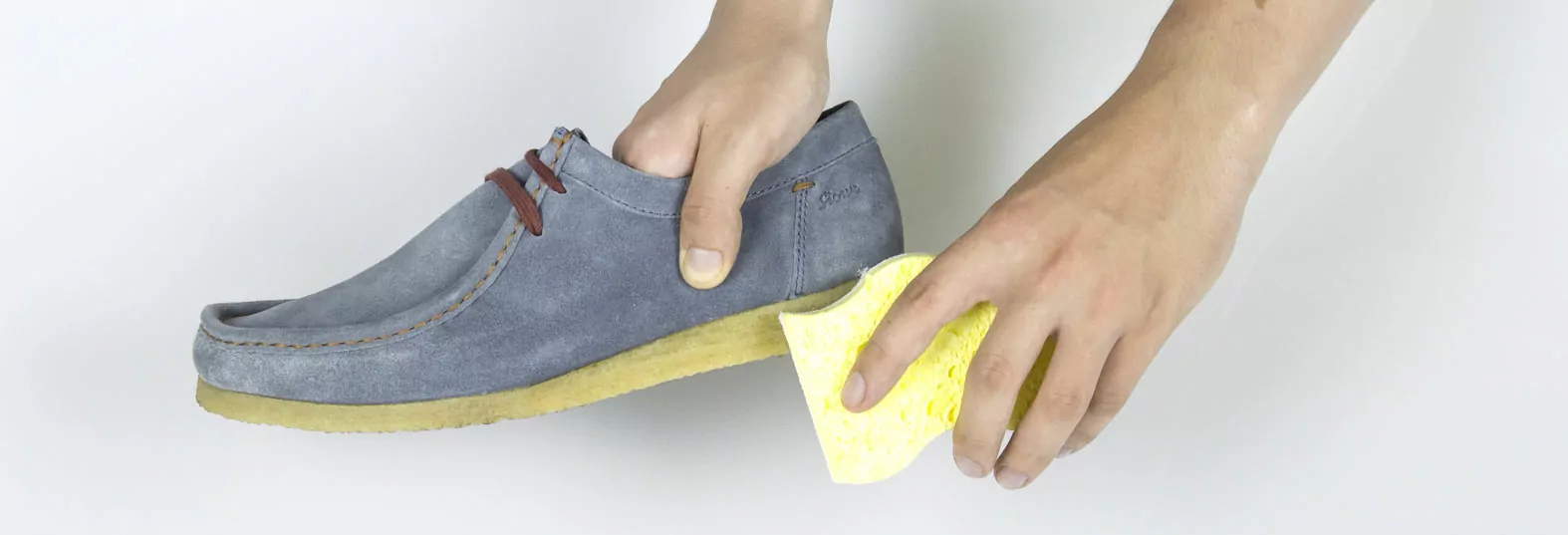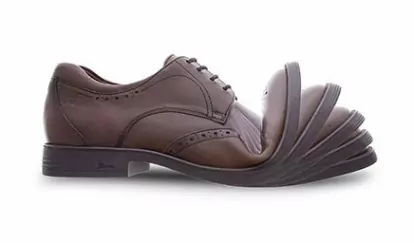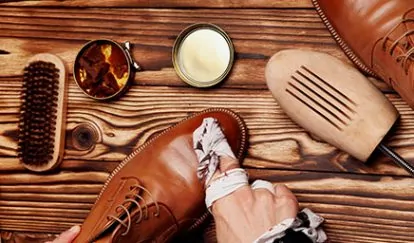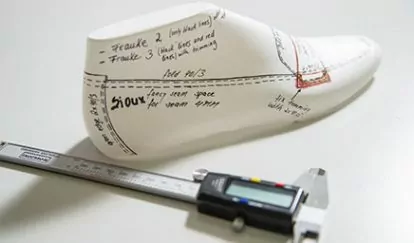CREPE SOLE
A true natural product to the core

The natural crepe sole ensures the most natural way of walking and standing. A disadvantage: It has open pores and therefore becomes dirty over time. Find out here how you can easily clean them again.
Do I need a care routine for keeping my crepe sole clean?
Natural crepe soles ensure recreation of the most natural way to walk or stand. One disadvantage: it is open-pored and therefore becomes gradually dirty over time. A little bit of dirt is not critical – it gives this unique natural product character and is the natural patina that provides the shoe with an interesting flair. These soles reflect the long and often dusty path we take over years. It is for this reason that we would say that the soles cannot and should not be kept completely pristine.
How to clean a natural crepe sole:
If you, however, feel that the honey-colored or white crepe soles are too dirty, the following, simple tricks will help you to partially clean them. It goes without saying that they will not come out of this process looking as though they are fresh out of the shoe box.
1. Using a grease-removing detergent
Dissolve the colourless detergent in warm water and then carefully lather the sole with a sponge. Remove the more coarse dirt with a brush (an old toothbrush will do) and wash off using clean water. Any fine tuning can be done by a sponge using soft movements forwards and backwards. Please be careful not to get the upper leather damp. Crepe soles with velour leather uppers (also known as suede) are a really attractive combination, which is why such styles are regularly manufactured. It is very important that the detergent is not applied to the upper leather section.
2. Using curd soap
The crepe sole is dampened using warm water prior to cleaning. You can then apply the soap directly to the sole and rub using a brush or put the soap on the brush and apply this way. After this, you can follow the instructions from step 1.
What should you consider when cleaning the crepe soles? Please do not apply solvents such as turpentine, cleaning solvents or enamel removers to the sole. Most solvents are made from methanol or ethanol. As the crepe soles we use at Sioux are made of 100% natural products, the surface of the sole will become damaged upon contact with solvents and therefore incur irreversible damages. The surface could become sticky and result in even more soil being absorbed after such an inappropriate treatment.
Summary:
Here at Sioux, we recommend that you leave crepe soles with their natural patina. This way, the soles will tell their own individual story. It is only when the dirt starts to collect too much that you should try the tips above. Want to know about the special features that natural crepe soles boast? Click here for more information about this extraordinary natural product.
OUR PRODUCT RECOMMENDATIONS FOR YOU
Crepe sole
Learn more about what is undoubtedly the most natural form of comfort - everything about this Sioux speciality can be found here.
Shoe construction techniques
Why are there so many different shoe models? The construction technique used by Sioux depends on what the shoe will be worn for and what the wearer requires from it. Because, ultimately, the shoe must have a perfect fit.
Things you should consider when buying shoes
The following 10 tips will give you a practical guide and help you with your next shoe purchase. Besides the right shoe size and width, an optimal fit, skilful workmanship and the use of high-quality materials for the upper, lining and outsole are also important factors when it comes to quality and selection. We want you to stay feeling comfortable in your shoes for as long as possible.
Crepe sole
Learn more about what is undoubtedly the most natural form of comfort - everything about this Sioux speciality can be found here.
Labelling of materials
A question frequently asked by our customers is: “How can I be sure that the material used is really genuine leather?"
The history of footwear
More than 40,000 years ago, people developed a need to protect their feet against adverse external conditions. It took several centuries, however, until the fashionable and comfortable footwear that we are familiar with today became available.
Sioux hallgus protect
The combination of high-quality leather and our innovative Sioux-Tex climate membrane will give your feet that “feel-good” feeling: whilst moisture and vapour are quickly wicked away from the shoes, water from the outside has no chance of getting in, meaning your feet are always warm and dry.
Sioux natural move system
The combination of high-quality leather and our innovative Sioux-Tex climate membrane will give your feet that “feel-good” feeling: whilst moisture and vapour are quickly wicked away from the shoes, water from the outside has no chance of getting in, meaning your feet are always warm and dry.
SiouxTex
The combination of high-quality leather and our innovative Sioux-Tex climate membrane will give your feet that “feel-good” feeling: whilst moisture and vapour are quickly wicked away from the shoes, water from the outside has no chance of getting in, meaning your feet are always warm and dry.
Shoe lining
Consumers often only pay attention to whether they like a shoe and whether it fits well. What is inside the shoe should also be a decisive factor: the shoe lining is often underestimated when buying shoes, despite being a key factor when it comes to comfort and health. Below we will explain the various types of shoe lining, their uses and the importance of shoe lining when it comes to your well-being.
Shoe soles
Whether they are a lightweight and flexible, feature unique air-cushioning or have a timeless and elegant leather sole: it's the perfect join of the shoe upper and sole which is the finishing touch to each and every shoe.
Shoe size and fit
As the foot performs a rolling motion when walking, it bears your weight in various areas and thus changes shape in doing so. The hallmark of a perfect-fitting shoe is that the toes and the foot itself have enough space within the shoe throughout this rolling motion and that the heel experiences sufficient grip. When a shoe fits, the heel does not slip out of the back of the shoe, and the shoe sits so perfectly in the midfoot area that the foot is supported – and is unable to slip forwards – hence the shoe pinching.
Shoe leather
Choosing the leather is very easy when it comes to Sioux shoes: we only settle for the best.
Shoemaking
There are lots of steps involved in making a shoe. From developing the model in the first instance, to the stamping, sewing and putting the finishing touches to the shoe at the very end.
Grashopper
In the 1960s, the natural form moccasin was a revolution. Today, the cult shoe is more topical than ever as a pioneer in modern casual wear.
 DE
DE EN
EN FR
FR NL
NL















